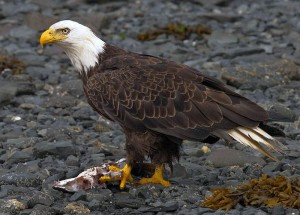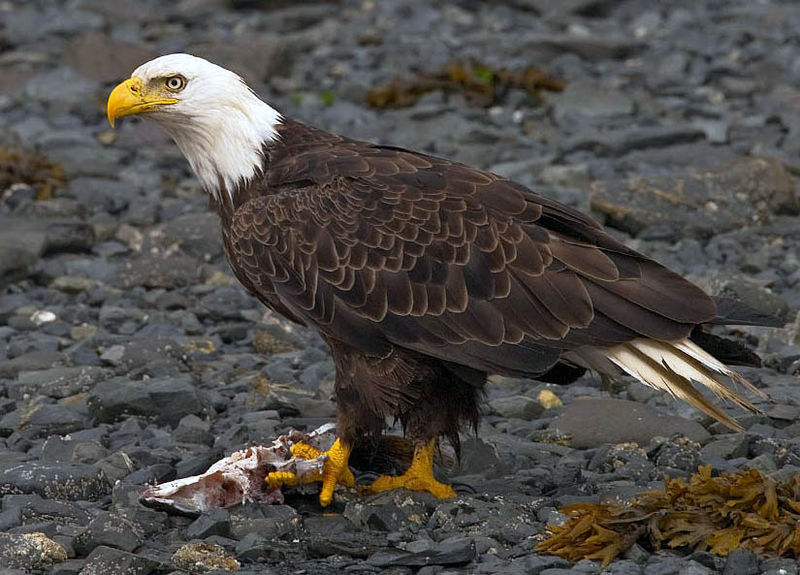 Several weeks ago I had the pleasure of experiencing a bald eagle in my yard soaring high above in all of its grandness. It’s hard not to be marveled by them. They are massive, beautiful birds that maintain a regal presence. I felt privileged to have had the opportunity to see one up-close and personal given that they have only been taken off of the endangered species list within the past five years.
Several weeks ago I had the pleasure of experiencing a bald eagle in my yard soaring high above in all of its grandness. It’s hard not to be marveled by them. They are massive, beautiful birds that maintain a regal presence. I felt privileged to have had the opportunity to see one up-close and personal given that they have only been taken off of the endangered species list within the past five years.
The bald eagle is one of the largest birds in the Northeast. An adult Bald Eagle is typically 30 inches in height, weighs between 8-12 pounds and has a wingspan of six to seven feet. Adults have a white head and tail, with a dark brown body and wings. The iris of their eye is yellow and they have bright orange-yellow colored beaks and feet. The males and females look similar, but the female is typically slightly larger and has a longer beak and back toe. Baby Bald Eagles are born with chocolate brown feathers molted with white, black beaks and dark brown irises.
In the early 18th century the Bald Eagle was a common sight throughout the United States, with the population estimated between 300,000 to 500,000. By the 1950s the population plummeted to just 400 or so nesting pairs in the US. Several factors contributed to their population decline including the loss of suitable habitat due to human intrusion, hunting, power-line electrocution as well as lead, oil, mercury and DDT pollution. The presence of pollutants in our ecosystem was not a direct threat to the bird itself, but rather to the fish it fed upon. Overtime, the consumption of the fish led to a build-up of the pollutants in their systems, effecting their calcium metabolism, which in turn caused their eggs to be sterile and/or the shells of the eggs to be thin and unable to withstand the weight of a brooding female. Thankfully, many of these factors are now a thing of the past.
In 1967 the Bald Eagle was put on the Endangered Species list. In 1976
New York State implemented the New York State Bald Eagle Restoration Project aimed at reestablishing the breeding population. The initiative focused on collecting bald eagles from other states, mainly Alaska, and hand rearing the eaglets to independence. The project ran through 1989 and successfully established ten breeding pairs. The program continues on today with a focus on monitoring the Bald Eagles’ productivity and protecting them. In 2007 approximately 173 breeding pairs were reported in New York State, giving birth to 244 young! New York State has made great strides in increasing and protecting the Bald Eagle population, but other factors have also played a significant role in keeping the Bald Eagle in our area. The banning of DDT in 1972 and the cleaning up of our waterways have reduced the pollutants in their prey, which in turn affects their health and ability to produce sustainable eggs. Bald Eagles are sensitive to human disturbance and although we have not slowed down on our development, many Bald Eagles have found suitable nesting grounds along the railways on the Hudson River. This untouched land, coupled with the fact that the Hudson River provides a large body of water that does not freeze, makes the Hudson Valley and ideal place for Eagles to flourish and soar throughout the year.
Although their population has been on the rise, it will be a long time before encountering a Bald Eagle is a commonplace experience. For now, I will enjoy any opportunity I get.
Picture courtesy of Wikipedia


 Receive FREE wildlife Tips!
Receive FREE wildlife Tips!
